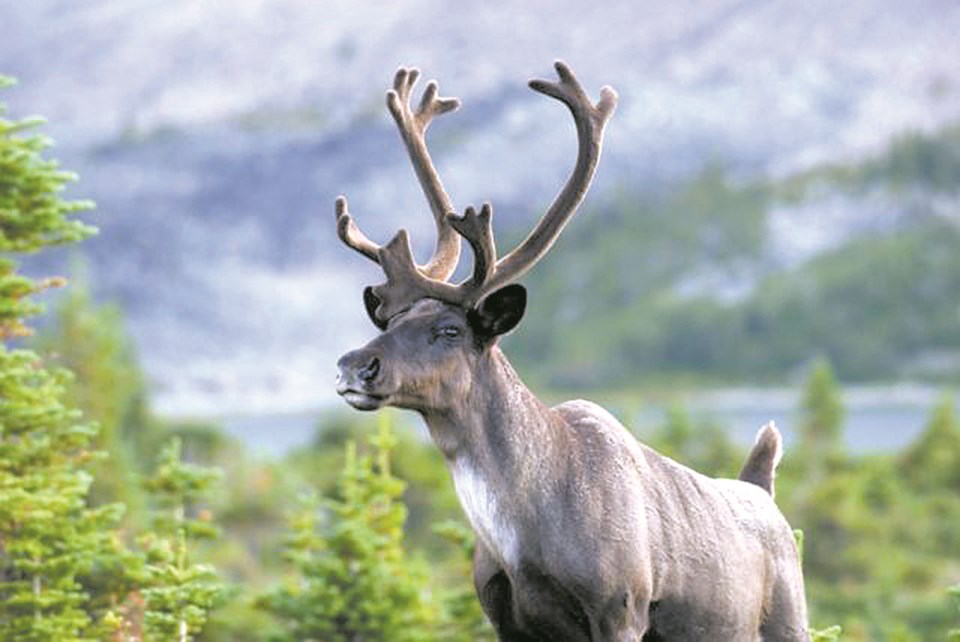BOW VALLEY – The Alberta government will set up task forces to provide recommendations on land-use planning and actions to recover the province’s threatened caribou.
Three sub-regional planning task forces, to be made up of municipal representatives, Indigenous communities, industry, recreational users and environmental groups, will focus on the northwest, northeast, and west-central areas of Alberta, where caribou habitats exist.
Jason Nixon, Minister of Environment and Parks, said the province wants a made-in-Alberta solution that “protects jobs and access while ensuring woodland caribou populations thrive long-term.”
“We are looking to develop a common-sense approach to protecting Alberta’s woodland caribou populations while balancing economic and employment concerns,” he said in a news release.
Currently, there’s an estimated 3,500 caribou remaining in the province.
Many caribou herds are dwindling at an accelerating pace because of dramatic habitat destruction from logging, mining, oil and gas development, and recreation. Other threats facing caribou include climate change, wildfires and predators.
Of the 18 herds identified in Alberta’s caribou recovery plan, one has since died out, another two are considered at immediate risk of extirpation, six are declining, six are unknown. Only three are reported stable.
Under Canada’s Species at Risk Act, the federal government has the authority to intervene if Alberta doesn’t take sufficient actions to protect critical habitat.
Last week’s announcement to set up task forces follows the release earlier this month of a draft conservation agreement between the Alberta and federal governments for caribou. The agreement, which is out for public review until October 6, outlines steps to be taken in the next five years.
Among several commitments, the draft agreement calls for completion of logging sequencing plans, oil and gas industry access management plans and recreational access management plans.
It also calls for Alberta’s controversial wolf cull to continue in select caribou ranges. Since 2005, more 1,200 wolves have been shot dead from helicopters or poisoned with bait laced with strychnine in areas in and adjacent to the Little Smoky and A La Peche caribou ranges. In some areas, wolves are preying heavily on caribou because they have easier access to traditional caribou range by trotting up man-made roads associated with industrial development.
In addition, the agreement outlines establishment of a large fenced-in caribou rearing facility to help boost critically low caribou numbers in the Little Smoky herd, which was first announced in 2016.
The Alberta Wilderness Association (AWA) is keen to take part in the planning task forces, but says a serious flaw in the draft federal-provincial caribou agreement, however, is the absence of any interim habitat protection to motivate governments to comply.
They say the draft agreement also lacks a funding commitment, and omits a target decade by which Alberta will achieve and maintain at least the minimum habitat requirements for self-sustaining caribou.
Carolyn Campbell, conservation specialist for AWA, said protection of habitat is key.
“The very extensive mass wolf culls and the potential pen for raising caribou calves are both totally unacceptable if we just sit back and allow habitat to continue to degrade,” she said.
The Canadian Association of Petroleum Producers will also participate in the task force process.
“We are pleased the government of Alberta is making caribou a priority and engaging with key stakeholders and local communities,” said Tim McMillan, the association’s president and CEO.
“Regional perspectives should be considered in land-use planning and caribou recovery.”
Initially, the task forces will provide recommendations to the government on draft sub-regional plans for Cold Lake, Bistcho Lake and Upper Smoky planning areas, which will address recovery for the Bistcho, Cold Lake, Narraway, and Redrock-Prairie Creek caribou ranges.
The Cold Lake sub-regional plan will be drafted by the end of 2019, with Bistcho following in the spring of 2020, and Upper Smoky by the fall of 2020.




